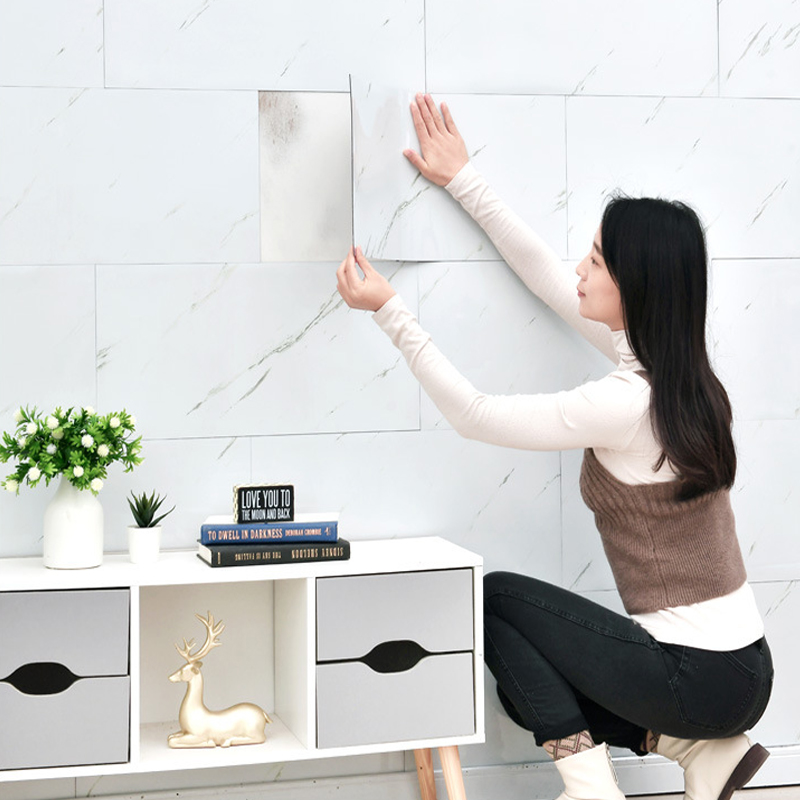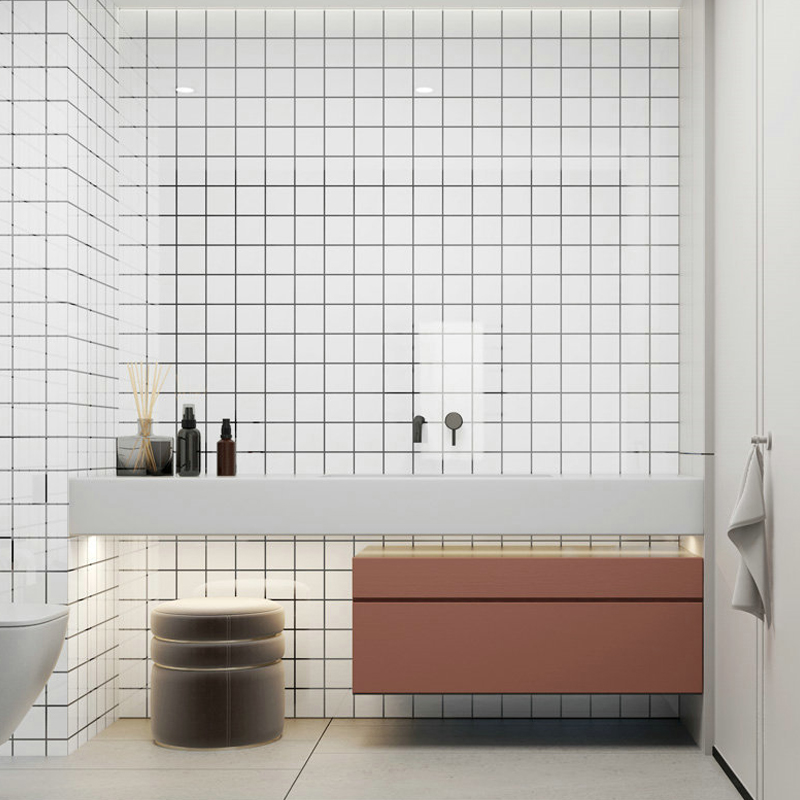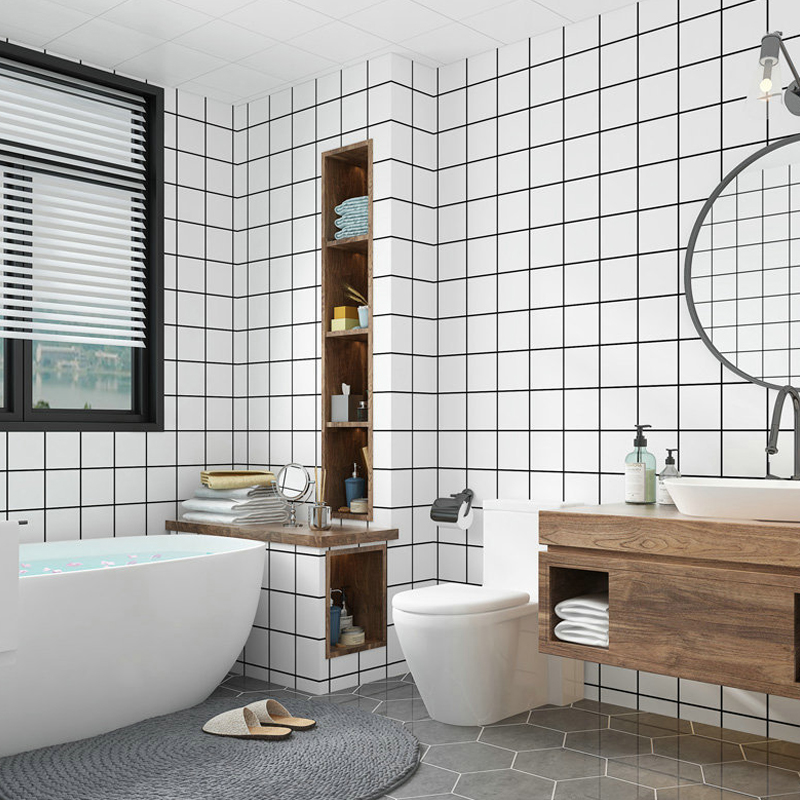Preparing the Shower Wall
Preparing the shower wall correctly is essential for a successful tiling job. So how to tile shower walls?

Assessing Existing Walls
First, examine the existing shower walls carefully. Check for old tiles, cracks, or mold. It may be easier to remove everything and start afresh down to the studs. This ensures a clean, stable surface for new tiles.
Preparing for New Shower Walls
For new shower walls, choose cement backer board as your base material. It resists water and mold, providing a sturdy foundation for tiles. Cut the backer board to fit and screw it onto the stud frame. Leave small gaps between boards and between the board bottom and the shower tray.
Waterproofing and Vapor Barriers
Before installing the new tiles, waterproofing is crucial. Lay a waterproof membrane under the shower tray to block moisture. For further protection, install a vapor barrier across the stud frame. Ensure it has a gap at the top for moisture to escape. This will help prevent any future water damage and mold growth.
Materials and Tools Needed
When it comes to how to tile shower walls, having the right materials and tools is crucial. This section will guide you through selecting apt tiles and the indispensable tools needed for the job.
Choosing the Right Tiles and Tools
Start by choosing tiles suitable for wet areas. Ceramic or porcelain tiles are ideal for shower walls due to their low water absorption rates. When it comes to tools, several are essential for a smooth installation:
- Tile cutter (manual or electric)
- Notched trowel for applying adhesive
- Tile spacers ensure even gaps
- Spirit level and measuring tape for accuracy
- Safety glasses and gloves for protection
Ensure you also have sufficient tile adhesive and grout before starting. It’s wise to use a flexible adhesive and grout, specially formulated for bathrooms, which can cope with slight movements and prevent cracking.
Utilizing the Correct Adhesives and Sealants
Selecting the right adhesive and sealant is critical to ensure durable and waterproof installations. Use a waterproof tile adhesive to prevent moisture from seeping behind the tiles which can lead to mold and damage. For sealing, silicone-based sealants are preferred as they offer long-lasting protection against water and mold. Remember to seal the gaps between tiles and other surfaces, like the shower tray, to prevent any water leakage.
By choosing the appropriate tiles, tools, adhesives, and sealants, you’re setting the foundation for a successful and lasting shower wall tiling.
Tile Layout and Marking
Properly marking and laying out the tiles ensures organized and accurate installation.
Measuring and Calculating Tile Quantity
Start by measuring the height and width of your shower wall. Multiply these dimensions to calculate the square meters of coverage needed. Remember to purchase an additional 5-10% of tiles to account for breakages and cuts. Make a rough sketch with measurements to visualize your layout.
Creating a Tiling Gauge Rod
Create a tiling gauge rod using a wooden batten about 1.8 meters long and 50x25mm in dimension. This rod helps determine tile positions and cuts required at the end of rows efficiently. Lay a line of tiles with spacers on the floor, align the batten, and mark tile and gap positions on it.
Marking Vertical and Horizontal Tile Positions
How to tile shower walls? Use your gauge rod to transfer the tile positions onto the walls. Align the rod vertically, and mark the tile positions with a pencil. Ensure these marks are level using a spirit level. Repeat this process horizontally, from the top of the shower tray to the ceiling, ensuring that the top and bottom rows align perfectly to minimize cutting. Adjust as necessary to ensure the tiles are at least half tile deep at the top and bottom rows.
Installing the Tiles
To secure a successful shower wall tiling, precise and skillful installation is key.
Setting Up Guides and Battens
Start by fixing guides for your tiles. Nail wooden battens to the wall. Align them with marked lines. Check they are level with a spirit level. Ensure these battens are straight and secure. They aid in tile alignment.

Applying Adhesive and Laying Tiles
Now, apply tile adhesive onto the wall. Do this in small sections to prevent drying. Use a notched trowel to spread it evenly. Place your first tile at the corner made by the battens. Press firmly into the adhesive. Follow with tiles above and beside the first, keeping edges straight.
Adjusting Tiles and Using Spacers
Employ tile spacers between tiles for equal gaps. Adjust tiles as you lay them for a flat surface. If a tile sits too high or low, add or remove adhesive beneath it. Continue laying tiles, and wipe away excess adhesive with a damp cloth.
Consistency is crucial when installing tiles. Follow these steps, and your shower walls will have a professional finish.
Tiling Techniques for Internal Corners
Tackling internal corners can be tricky when learning how to tile shower walls. Plan and measure carefully for best results.
Measuring and Cutting Tiles for Corners
Internal corners need individual tile measurements since walls are rarely perfectly straight. Hold a tile over the last full tile and use another to mimic the wall. Mark where it overlaps for cutting.
Always double-check the fit after cutting. Use a tile file for minor adjustments. Precision is key for a seamless corner.
Adjusting for Uneven Corners
Uneven corners are common. Measure each tile separately for accuracy. Don’t rely on uniform cutting. Apply adhesive on cut tiles’ backs.
Ensure cut tiles align flush with their neighbors. This prevents ledges where water could collect. Adjust with more adhesive or by filing as needed.
By measuring, cutting, and adjusting carefully, internal corners will look clean and professional. Always keep your safety gear on when cutting tiles.
Final Steps and Finishing Touches
As you approach the end of your shower wall tiling project, it’s paramount to execute the final steps with care. This ensures a clean, polished look and helps secure the longevity of your work.
Removing Guides and Cleaning Excess Adhesive
Once all tiles are in place, carefully remove the wooden battens. Gently pull out nails from the wall. Take out any tile spacers if they were not grouted over. Inspect the tiles for leftover adhesive. Swiftly wipe off any excess with a damp sponge or cloth. This avoids adhesive hardening on the tile surface. Be gentle to not shift fresh tiles.
Pay attention to the tile joints. Ensure they are free of excess adhesive. This ensures a smooth grout application later. Use a putty knife or scraper to remove any stubborn adhesive. Always move the tool along the joint and away from the tile edges to prevent damage.

Letting the Tiles Dry and Set
Allow enough dry time for the adhesive. This typically takes 48 hours. During this period, don’t touch or clean the tiles. This drying stage is crucial for adhesive to properly bond to the backer board and tiles. It’s tempting to rush this step, but patience here is key to a long-lasting tile job.
After the waiting period, review the work once more. Ensure tiles are secure and the surface is ready for grouting. The patience and effort you put into these last stages will ensure that your tiled shower walls are sturdy and visually appealing, ultimately transforming your bathroom space.



